Opinion & Analysis
Hunt: Advanced break down of Tiger’s stats under Harmon, Haney and Foley
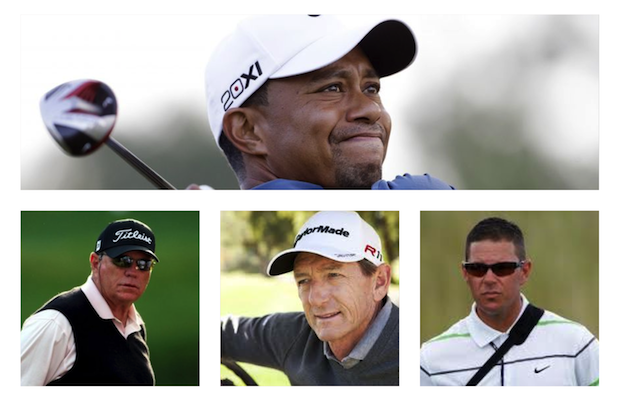
Last week Tiger Woods announced that he was parting ways with instructor Sean Foley. I wanted to examine Tiger’s game over the course of his professional career to get a better understanding of what was going on and what may have caused him to change swing coaches over the years.
Please bear with me as many of the key metrics listed below were not available during these years. Nonetheless, we can still get a pretty good idea of Tiger’s game during the Butch Harmon years.
For starters, he was one of the longest golfers on Tour. This was despite using a steel-shafted driver when most of the Tour had switched to drivers with lighter graphite shafts. The pinnacle of Woods’ success was in 2000; he won nine times including the U.S. Open, The Open Championship and PGA Championship. He ranked second in Driving Distance that season and 54th in Driving Accuracy, which is flat-out incredible.
We also see with his driving that his misses were fairly even. As I researched in a previous column I wrote (http://www.golfwrx.com/115076/the-myth-behind-the-one-way-miss/), there is a large myth about a one-way miss being preferable. Instead, the best drivers on Tour typically do not miss their tee shots in one direction. And the golfers on Tour who do miss heavily to one side are usually struggling with a problem shot they have yet to resolve. For Tiger, there is no imbalance of his missed tee shots.
For the years we have the data, Tiger was a very good iron player. The “Zone play” data is only on shots from the fairway because that is where we had the most complete information for Tiger over the years. This is fine because from a statistical standpoint, shots from the fairway give us the best indicator of a golfer’s iron play. But, we do see that hitting shots from the rough was a large issue for Tiger as he ranked near the bottom on Tour.
The putting data is scarce during this timeframe, but he appeared to putt fairly well in 2003. While ballstriking has a larger influence to success on Tour than putting, every piece of data I’ve researched about the game points to Tiger putting extremely well in 2000.
The Haney years are best depicted as a large regression in Tiger’s driving mixed with a tremendous progression with his iron play. There also seemed to be an improvement with his putting.
Tiger was still fairly long off the tee and was generating as much as 124.6 mph of club head speed. While we do not have any hard data on his club head speed under Butch Harmon, it was reported to be around 125 mph during that timeframe. In the Haney years, however, we start to see major issues with Tiger’s accuracy off the tee.
In 2000, Tiger was 54th in fairway percentage and in 2004 he fell to 177th and then 193rd in 2005. He also started to develop a very pronounced right miss bias, which at its worst was at 24 percent of misses to the right rough versus 10 percent to the left rough in 2008.
Furthermore, we start to see not only a dip in Tiger’s club head speed in 2009 and 2010, but we start to see Tiger become more conservative off the tee. The biggest indication is the difference in Tiger’s Driving Distance (measured drives) ranking versus his Driving Distance in all drives measured by a laser. When the “all drives” ranking is noticeably lower than the “measured drives” ranking, it is an indication that the golfer is laying up off the tee more often.
I don’t think any of this is revelatory, as those who watched Tiger during the Haney years saw the issues he had with hitting blocked shots off the tee. And then he played very conservatively off the tee by hitting a lot of 3 woods and 2 irons in order to keep the ball in play. Remember the 2009 PGA Championship, where Tiger lost to Y.E. Yang? Tiger almost never hit driver off the tee in the final round.
Tiger’s iron play during the Haney era is a different story. We can see by his rankings how incredible Tiger was, however, that doesn’t quite give the entire picture. The key area for iron play on Tour are shots from the “Red Zone,” which is 175-to-225 away from the hole. Not only did Tiger rank 1st in 5 out of his 7 years in the Red Zone under Haney, but he often ranked well ahead of the 2nd ranked player.
In 2006, the 2nd-ranked player from the Red Zone was Kenny Perry. Tiger was hitting it 9 percent closer to the hole from the Red Zone than Kenny Perry did that season. In 2007, Ernie Els was the 2nd-ranked player from the Red Zone. Tiger was hitting it 5 percent closer to the cup on average than Els from the Red Zone.
And not only was Tiger becoming an incredible iron player from the fairway, but his play from the rough greatly improved. The numbers and the victories dictate that had to happen because he was finding the rough much more often. Therefore, he had to improve his shots from the rough in order keep winning.
Lastly, we see a very telling and interesting trait of Tiger’s game in his putting metrics. He was generally a good to spectacular putter from 3-to-5 feet, however, he was incredible at making putts from 15-to-25 feet. Typically, Tour players do not rank high or low with any consistency on putts more than 15 feet long. A Tour player who putts poorly from longer than 15 feet one season is likely to progress towards the mean the next season. Conversely, a Tour player who putts well from longer than 15 feet one season is more likely to regress towards the mean the next season.
Tiger, on the other hand, putted fantastic from 15-to-25 feet five seasons in a row: from 2004 to 2008. He slipped in 2009, but countered that by putting superbly on putts longer than 25 feet. This shows that Tiger is at the top of his game when he is making putts from 3-to-5 feet and from 15-to-25 feet. He was very wild off the tee and then became conservative off the tee in the Haney era. So, that will mean more birdie putts from 15-to-25 feet and more par saves from 3-to-5 feet. So when Tiger had his putter working from those distances, he was very difficult to beat.
In the Foley years, we see that Tiger’s club head speed decreased, however, we also saw that decrease in club head speed in the 2009 and 2010 seasons when Tiger was still working with Haney. I think it is safe to say that the knee injury certainly took a toll on his club head speed. After the 2011 season, we see that Tiger started to not miss the right all of the time. And his fairway percentage improved nicely to 66th in 2012.
What I find interesting is that Tiger had a very nice season driving the ball in 2012. He was not laying up much off the tee, as his Driving Distance rank on measured drives versus all drives was virtually the same. But, after that successful 2012 season, Tiger started to become incredibly conservative off the tee and was laying up off the tee quite often. His iron play regressed, but it essentially became more human from the incredible iron play during the Haney years. His troubles from the rough also started to come back.
Lastly, Tiger’s putting was good but not elite like it was in many of the seasons under Haney. He still made a lot of 15-to-25 foot putts. In fact, after he won his 4th event of 2013 (The Players Championship at TPC Sawgrass), he was ranked No. 1 on putts from 15-to-25 feet, well ahead everybody else. He needed to putt that well from 15-to-25 feet, however, because he was becoming so conservative off the tee that he would leave himself with longer birdie putts than Tour players who were hitting driver off the tee and thus and hitting their approach shots closer to the hole. And since his play from the rough regressed, that required him to make more putts from 3-to-5 feet to save par and he simply could not get that done under Foley.
In summation, Tiger had some incredible parts to his game under Harmon and Haney. His driving under Harmon was at times incredible. His iron play and putting from 15-to-25 feet under Haney was off the charts. The injuries have taken their toll and it has greatly hurt his club head speed. He has further exasperated the matter by becoming extremely conservative off the tee, even when his accuracy greatly improved under Foley.
At this point, Tiger will either need to find a way to rejuvenate himself and regain his club head speed or he will have to change the way he plays the game at 115-to-116 mph club head speed. The numbers already show the effect that his injuries have had on his game. So, any further injuries will just amplify the issues.
- LIKE10
- LEGIT0
- WOW3
- LOL0
- IDHT0
- FLOP0
- OB0
- SHANK0
19th Hole
Vincenzi’s 2024 Zurich Classic of New Orleans betting preview

The PGA TOUR heads to New Orleans to play the 2023 Zurich Classic of New Orleans. In a welcome change from the usual stroke play, the Zurich Classic is a team event. On Thursday and Saturday, the teams play best ball, and on Friday and Sunday the teams play alternate shot.
TPC Louisiana is a par 72 that measures 7,425 yards. The course features some short par 4s and plenty of water and bunkers, which makes for a lot of exciting risk/reward scenarios for competitors. Pete Dye designed the course in 2004 specifically for the Zurich Classic, although the event didn’t make its debut until 2007 because of Hurricane Katrina.
Coming off of the Masters and a signature event in consecutive weeks, the field this week is a step down, and understandably so. Many of the world’s top players will be using this time to rest after a busy stretch.
However, there are some interesting teams this season with some stars making surprise appearances in the team event. Some notable teams include Patrick Cantlay and Xander Schauffele, Rory McIlroy and Shane Lowry, Collin Morikawa and Kurt Kitayama, Will Zalatoris and Sahith Theegala as well as a few Canadian teams, Nick Taylor and Adam Hadwin and Taylor Pendrith and Corey Conners.
Past Winners at TPC Louisiana
- 2023: Riley/Hardy (-30)
- 2022: Cantlay/Schauffele (-29)
- 2021: Leishman/Smith (-20)
- 2019: Palmer/Rahm (-26)
- 2018: Horschel/Piercy (-22)
- 2017: Blixt/Smith (-27)
2024 Zurich Classic of New Orleans Picks
Tom Hoge/Maverick McNealy +2500 (DraftKings)
Tom Hoge is coming off of a solid T18 finish at the RBC Heritage and finished T13 at last year’s Zurich Classic alongside Harris English.
This season, Hoge is having one of his best years on Tour in terms of Strokes Gained: Approach. In his last 24 rounds, the only player to top him on the category is Scottie Scheffler. Hoge has been solid on Pete Dye designs, ranking 28th in the field over his past 36 rounds.
McNealy is also having a solid season. He’s finished T6 at the Waste Management Phoenix Open and T9 at the PLAYERS Championship. He recently started working with world renowned swing coach, Butch Harmon, and its seemingly paid dividends in 2024.
Keith Mitchell/Joel Dahmen +4000 (DraftKings)
Keith Mitchell is having a fantastic season, finishing in the top-20 of five of his past seven starts on Tour. Most recently, Mitchell finished T14 at the Valero Texas Open and gained a whopping 6.0 strokes off the tee. He finished 6th at last year’s Zurich Classic.
Joel Dahmen is having a resurgent year and has been dialed in with his irons. He also has a T11 finish at the PLAYERS Championship at TPC Sawgrass which is another Pete Dye track. With Mitchell’s length and Dahmen’s ability to put it close with his short irons, the Mitchell/Dahmen combination will be dangerous this week.
Taylor Moore/Matt NeSmith +6500 (DraftKings)
Taylor Moore has quickly developed into one of the more consistent players on Tour. He’s finished in the top-20 in three of his past four starts, including a very impressive showing at The Masters, finishing T20. He’s also finished T4 at this event in consecutive seasons alongside Matt NeSmith.
NeSmith isn’t having a great 2024, but has seemed to elevate his game in this format. He finished T26 at Pete Dye’s TPC Sawgrass, which gives the 30-year-old something to build off of. NeSmith is also a great putter on Bermudagrass, which could help elevate Moore’s ball striking prowess.
- LIKE6
- LEGIT1
- WOW1
- LOL0
- IDHT0
- FLOP2
- OB1
- SHANK1
19th Hole
Vincenzi’s 2024 LIV Adelaide betting preview: Cam Smith ready for big week down under

After having four of the top twelve players on the leaderboard at The Masters, LIV Golf is set for their fifth event of the season: LIV Adelaide.
For both LIV fans and golf fans in Australia, LIV Adelaide is one of the most anticipated events of the year. With 35,000 people expected to attend each day of the tournament, the Grange Golf Club will be crawling with fans who are passionate about the sport of golf. The 12th hole, better known as “the watering hole”, is sure to have the rowdiest of the fans cheering after a long day of drinking some Leishman Lager.
The Grange Golf Club is a par-72 that measures 6,946 yards. The course features minimal resistance, as golfers went extremely low last season. In 2023, Talor Gooch shot consecutive rounds of 62 on Thursday and Friday, giving himself a gigantic cushion heading into championship Sunday. Things got tight for a while, but in the end, the Oklahoma State product was able to hold off The Crushers’ Anirban Lahiri for a three-shot victory.
The Four Aces won the team competition with the Range Goats finishing second.
*All Images Courtesy of LIV Golf*
Past Winners at LIV Adelaide
- 2023: Talor Gooch (-19)
Stat Leaders Through LIV Miami
Green in Regulation
- Richard Bland
- Jon Rahm
- Paul Casey
Fairways Hit
- Abraham Ancer
- Graeme McDowell
- Henrik Stenson
Driving Distance
- Bryson DeChambeau
- Joaquin Niemann
- Dean Burmester
Putting
- Cameron Smith
- Louis Oosthuizen
- Matt Jones
2024 LIV Adelaide Picks
Cameron Smith +1400 (DraftKings)
When I pulled up the odds for LIV Adelaide, I was more than a little surprised to see multiple golfers listed ahead of Cameron Smith on the betting board. A few starts ago, Cam finished runner-up at LIV Hong Kong, which is a golf course that absolutely suits his eye. Augusta National in another course that Smith could roll out of bed and finish in the top-ten at, and he did so two weeks ago at The Masters, finishing T6.
At Augusta, he gained strokes on the field on approach, off the tee (slightly), and of course, around the green and putting. Smith able to get in the mix at a major championship despite coming into the week feeling under the weather tells me that his game is once again rounding into form.
The Grange Golf Club is another course that undoubtedly suits the Australian. Smith is obviously incredibly comfortable playing in front of the Aussie faithful and has won three Australian PGA Championship’s. The course is very short and will allow Smith to play conservative off the tee, mitigating his most glaring weakness. With birdies available all over the golf course, there’s a chance the event turns into a putting contest, and there’s no one on the planet I’d rather have in one of those than Cam Smith.

Louis Oosthuizen +2200 (DraftKings)
Louis Oosthuizen has simply been one of the best players on LIV in the 2024 seas0n. The South African has finished in the top-10 on the LIV leaderboard in three of his five starts, with his best coming in Jeddah, where he finished T2. Perhaps more impressively, Oosthuizen finished T7 at LIV Miami, which took place at Doral’s “Blue Monster”, an absolutely massive golf course. Given that Louis is on the shorter side in terms of distance off the tee, his ability to play well in Miami shows how dialed he is with the irons this season.
In addition to the LIV finishes, Oosthuizen won back-to-back starts on the DP World Tour in December at the Alfred Dunhill Championship and the Mauritus Open. He also finished runner-up at the end of February in the International Series Oman. The 41-year-old has been one of the most consistent performers of 2024, regardless of tour.
For the season, Louis ranks 4th on LIV in birdies made, T9 in fairways hit and first in putting. He ranks 32nd in driving distance, but that won’t be an issue at this short course. Last season, he finished T11 at the event, but was in decent position going into the final round but fell back after shooting 70 while the rest of the field went low. This season, Oosthuizen comes into the event in peak form, and the course should be a perfect fit for his smooth swing and hot putter this week.

- LIKE10
- LEGIT2
- WOW0
- LOL0
- IDHT0
- FLOP0
- OB0
- SHANK0
Opinion & Analysis
The Wedge Guy: What really makes a wedge work? Part 1

Of all the clubs in our bags, wedges are almost always the simplest in construction and, therefore, the easiest to analyze what might make one work differently from another if you know what to look for.
Wedges are a lot less mysterious than drivers, of course, as the major brands are working with a lot of “pixie dust” inside these modern marvels. That’s carrying over more to irons now, with so many new models featuring internal multi-material technologies, and almost all of them having a “badge” or insert in the back to allow more complex graphics while hiding the actual distribution of mass.
But when it comes to wedges, most on the market today are still single pieces of molded steel, either cast or forged into that shape. So, if you look closely at where the mass is distributed, it’s pretty clear how that wedge is going to perform.
To start, because of their wider soles, the majority of the mass of almost any wedge is along the bottom third of the clubhead. So, the best wedge shots are always those hit between the 2nd and 5th grooves so that more mass is directly behind that impact. Elite tour professionals practice incessantly to learn to do that consistently, wearing out a spot about the size of a penny right there. If impact moves higher than that, the face is dramatically thinner, so smash factor is compromised significantly, which reduces the overall distance the ball will fly.
Every one of us, tour players included, knows that maddening shot that we feel a bit high on the face and it doesn’t go anywhere, it’s not your fault.
If your wedges show a wear pattern the size of a silver dollar, and centered above the 3rd or 4th groove, you are not getting anywhere near the same performance from shot to shot. Robot testing proves impact even two to three grooves higher in the face can cause distance loss of up to 35 to 55 feet with modern ‘tour design’ wedges.
In addition, as impact moves above the center of mass, the golf club principle of gear effect causes the ball to fly higher with less spin. Think of modern drivers for a minute. The “holy grail” of driving is high launch and low spin, and the driver engineers are pulling out all stops to get the mass as low in the clubhead as possible to optimize this combination.
Where is all the mass in your wedges? Low. So, disregarding the higher lofts, wedges “want” to launch the ball high with low spin – exactly the opposite of what good wedge play requires penetrating ball flight with high spin.
While almost all major brand wedges have begun putting a tiny bit more thickness in the top portion of the clubhead, conventional and modern ‘tour design’ wedges perform pretty much like they always have. Elite players learn to hit those crisp, spinny penetrating wedge shots by spending lots of practice time learning to consistently make contact low in the face.
So, what about grooves and face texture?
Grooves on any club can only do so much, and no one has any material advantage here. The USGA tightly defines what we manufacturers can do with grooves and face texture, and modern manufacturing techniques allow all of us to push those limits ever closer. And we all do. End of story.
Then there’s the topic of bounce and grinds, the most complex and confusing part of the wedge formula. Many top brands offer a complex array of sole configurations, all of them admittedly specialized to a particular kind of lie or turf conditions, and/or a particular divot pattern.
But if you don’t play the same turf all the time, and make the same size divot on every swing, how would you ever figure this out?
The only way is to take any wedge you are considering and play it a few rounds, hitting all the shots you face and observing the results. There’s simply no other way.
So, hopefully this will inspire a lively conversation in our comments section, and I’ll chime in to answer any questions you might have.
And next week, I’ll dive into the rest of the wedge formula. Yes, shafts, grips and specifications are essential, too.
- LIKE31
- LEGIT7
- WOW1
- LOL1
- IDHT2
- FLOP3
- OB1
- SHANK3
-

 19th Hole2 weeks ago
19th Hole2 weeks agoDave Portnoy places monstrous outright bet for the 2024 Masters
-

 19th Hole2 weeks ago
19th Hole2 weeks agoTiger Woods arrives at 2024 Masters equipped with a putter that may surprise you
-

 19th Hole18 hours ago
19th Hole18 hours ago‘Absolutely crazy’ – Major champ lays into Patrick Cantlay over his decision on final hole of RBC Heritage
-

 19th Hole3 weeks ago
19th Hole3 weeks agoReport: Tiger Woods has ‘eliminated sex’ in preparation for the 2024 Masters
-

 19th Hole1 week ago
19th Hole1 week agoTwo star names reportedly blanked Jon Rahm all week at the Masters
-

 19th Hole7 days ago
19th Hole7 days agoReport: LIV Golf identifies latest star name they hope to sign to breakaway tour
-

 19th Hole1 week ago
19th Hole1 week agoNeal Shipley presser ends in awkward fashion after reporter claims Tiger handed him note on 8th fairway
-

 19th Hole6 days ago
19th Hole6 days agoBrandel Chamblee has ‘no doubt’ who started the McIlroy/LIV rumor and why

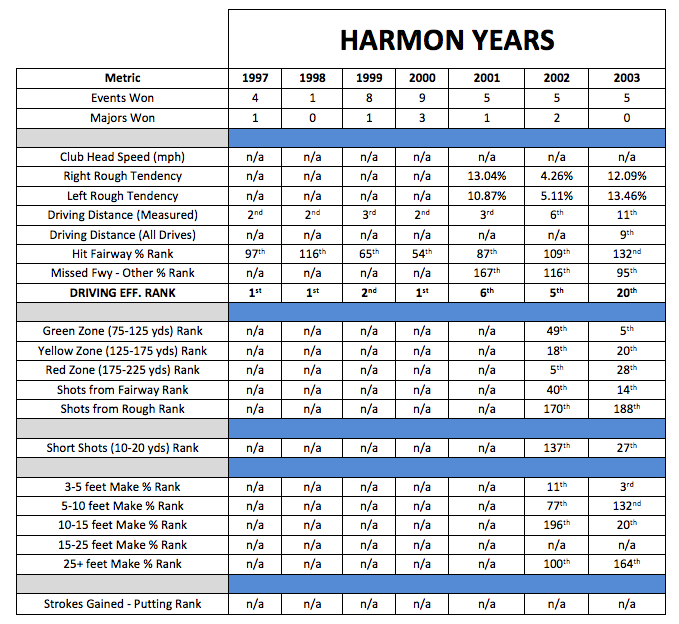
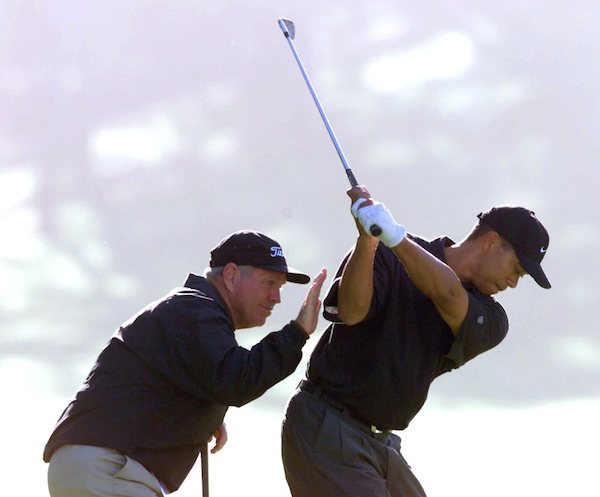
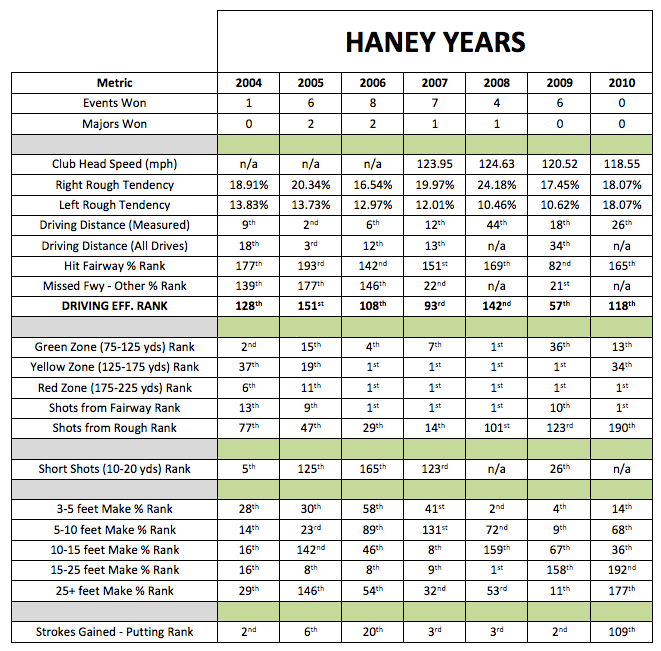

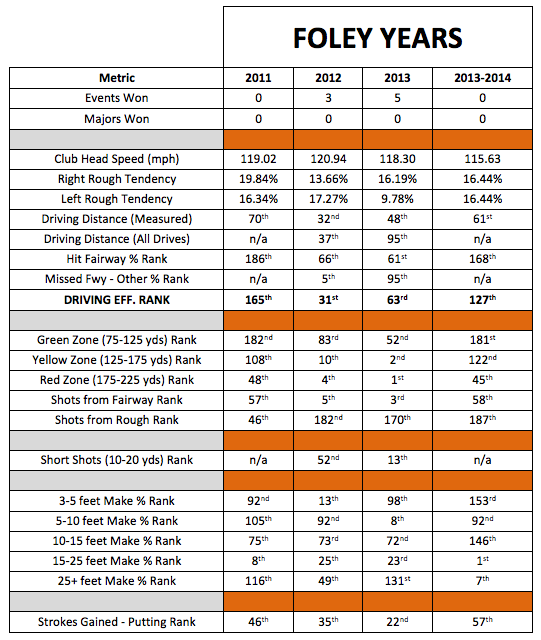
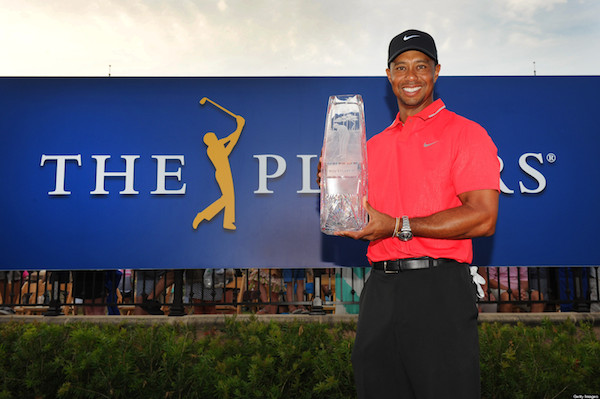














Pingback: Interesting article « Thomas Petersson
Kisha
Sep 9, 2014 at 9:58 am
PF
marionmg
Sep 7, 2014 at 9:50 pm
Strokes gained….strokes gained…..strokes gained….
sebastien
Sep 7, 2014 at 8:36 am
So… All of them got ‘fired’ following a bad season…
I could care less who he picks, just hope he gets to enjoy the game again cause all I’ve seen lately is a miserable Tiger
Christosterone
Sep 5, 2014 at 11:17 am
Tiger has won 79 PGA tournaments(106 total)and 14 majors.
For the record, in 2013 tigers stats:
5 WINS…thats 5 in one year including the players
PGA Player of the Year
PGA Tour Player of the Year
Vardon Trophy
Money List Winner
………..
I would say that is pretty impressive and bodes well for his future…
He is currently recovering a major back surgery so it is expected that he will not be up to form for a minimum of 6 months from his surgery…probably more like a year
Jerome M
Sep 5, 2014 at 8:14 am
Lovely article Rich. And yes, there are people who care (unlike the comment made by ‘Booger’).
In my view, Tiger has lost his ‘energy power’ as a result of the reduction in his range of motion due to his heavy dependency on weight training. This loss of energy has reduced his club head speed. And to make up for the loss of his club head speed and hence distance, he lifts heavy weights. More scar tissue is formed and the cycle continues.
His accuracy, or lack thereof, off the Tee and with his Irons under Sean is a direct consequence of his improper ‘firing’ sequence and his his improper spine alignment at impact (both down-the-line and frontal).
The issues above are easy to resolve at any age. He just needs to stop heavy weight training and to remove all scar tissue by visiting a professional who specializes in microfiber reduction. He can do it! He is Tiger Woods.
Booger
Sep 5, 2014 at 6:29 am
In the middle of the playoffs and the Ryder cup coming up, your writing about this guy. Nobody cares.
DavidOber
Sep 7, 2014 at 10:04 pm
I care about Tifwe. Just like I still care about Nicklaus, Palmer, Player, Trevino, Watson and all the other living greats. Nice article, sir. Thank you.
DavidOber
Sep 7, 2014 at 10:05 pm
“Tifwe” was supposed to read, “Tiger.”
Raurie
Sep 5, 2014 at 2:02 am
Really great read. I know we don’t have all the metrics from the Harmon era but it interesting to see that Tiger was not necessarily the complete package that we all seem to think he was during that time (myself included). I would love to be able to see his stats for the red, yellow and green zones during the Harmon era.
Jeff
Sep 4, 2014 at 10:26 pm
This is probably going to strike some as an inappropriate comment, but there’s a real basis for my hypothesis. I think Tiger’s club head speed and accuracy both fell of when he lost the ability to perform the favored “core strengthening regimen” of athletes and men since the beginning of time. The scandal of ’10 cost him in many ways, the least reported of which is he couldn’t possibly have had the same Wilt-Chamberlain like prolific pace with the ladies. It may make some blush, but there’s not much better for core strength, and core strength is great for golf.
James
Sep 4, 2014 at 2:18 pm
Thanks for that, Rich. In Haney’s book he said that Woods had trouble adapting to the new less spinny balls when they came out and shots which previously had drawn back to the middle of the fairway with his driver stopped doing it with new balls. He had to exaggerate the path/face relationship to get it to come back and became less accurate.
JBH
Sep 4, 2014 at 1:13 pm
One particular thing I’ve noticed since Tiger started with Foley is that he doesn’t seem to have the artistry/arsenal of shots he used to have. I realize a new swing will take time to develop these shots but I remember when Tiger would spray the ball all over the park off the tee and then hit some ridiculous recovery shot that made your jaw hit the ground. He seems to be very limited with his options now and unless he’s in the short grass he’s having to lay up and scramble for par.
TheFightingEdFioris
Sep 4, 2014 at 12:47 pm
I learned a little… But I certainly reaffirmed that Tiger Woods with an iron in his hand is the greatest of all time. He’s got Hogan’s low ones, he’s got Nicklaus’s high ones, and everything in between. Loved watching him hit all nine shots under Haney, what a joy. Hope he goes back to being an artist, like that.
West
Sep 4, 2014 at 12:26 pm
Is it also possible that athletes generally taper-off over the years too???
TheFightingEdFioris
Sep 4, 2014 at 12:50 pm
Most of the other great players of Tiger’s generation have played their best golf at this age.. Ernie was great in 2010 and won the Open in ’12. Furyk continues to be on the leaderboard every week. Vijay was unreal at 40. Phil won an Open and contended in countless other majors.
But I will admit… this horse (or cat, if you will) has a ton of miles on it.
Jake
Sep 4, 2014 at 3:15 pm
Driving/Iron play declines quickly for guys from the late 30s, especially into the 40s. Check the 3rd/5th graphs here (http://golfanalytics.wordpress.com/2014/05/14/aging-curves-for-scrambling-and-driving-distance/).
And I strongly disagree that most of his contemporaries have had their best years in their 40s. Phil isn’t the overall player he was in the mid 2000s (when he was ~35). He’s won a major after 40, but his overall game has declined from top five to more like top 20. Same with Ernie. He was top five in the world in his 30s; he’s declined to a shell of that guy since. Lee Westwood’s not anything like the guy he was in his late 30s. Retief Goosen was great in his late 30s, now he’s anonymous. Padraig Harrington hasn’t been the same since he turned 40. Robert Allenby, a hugely underrated ball-striker, has been awful since turning 40. Greg Norman was completely cooked by age 42-43. etc, etc, etc.
The list of contemporaries who genuinely have played their best golf after 40 is Stricker and Vijay. Furyk has managed to stay about the same.
Chris
Sep 4, 2014 at 12:02 pm
I love these statistical looks at things. Keep up the stellar work!